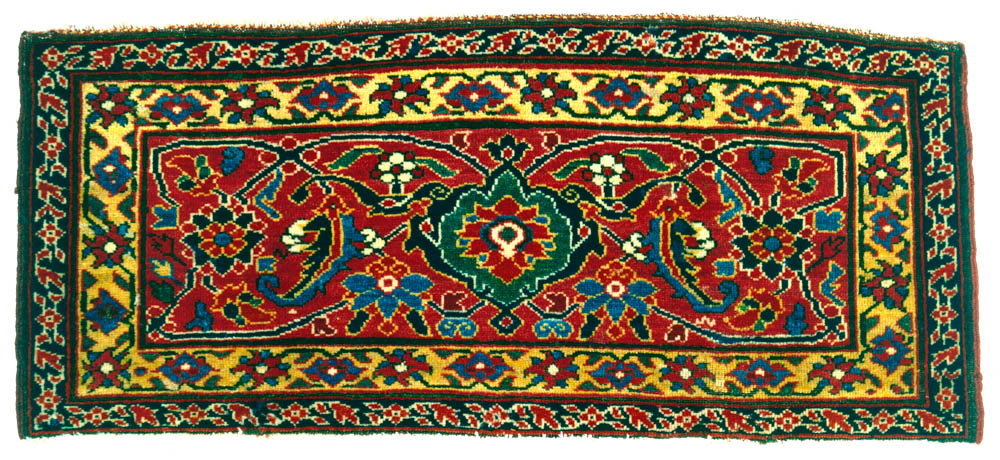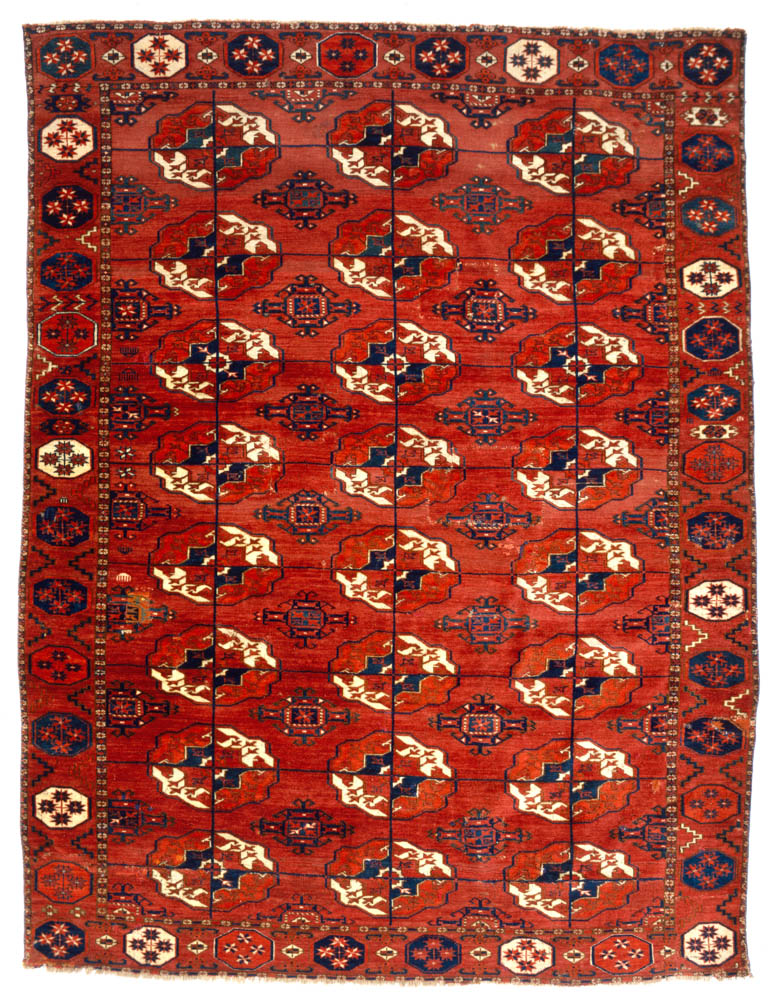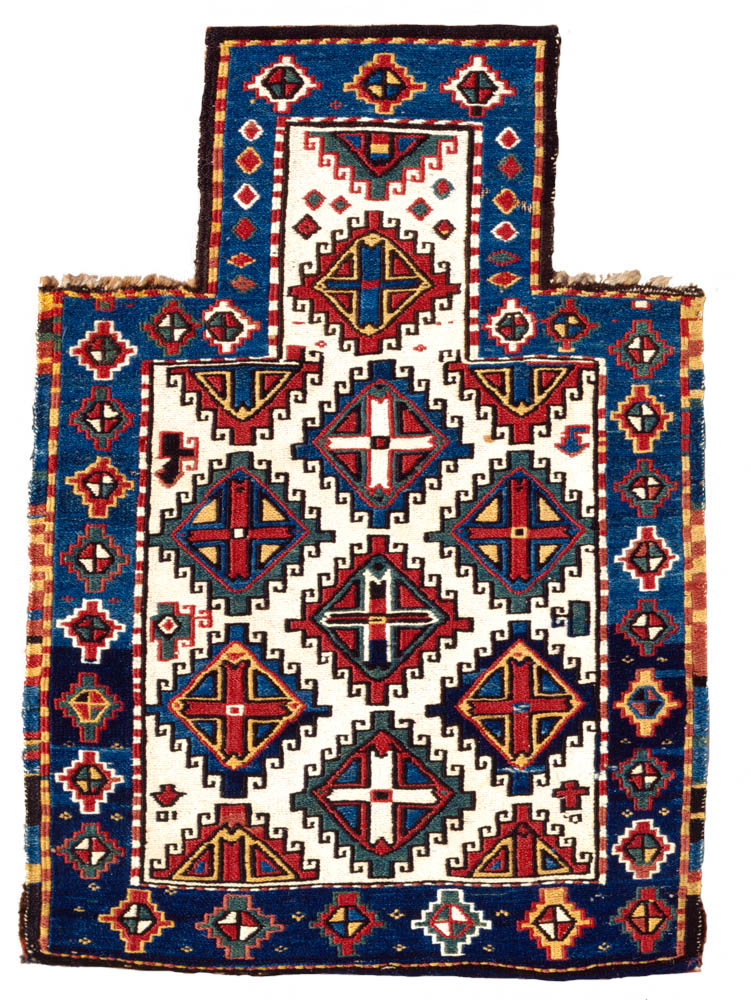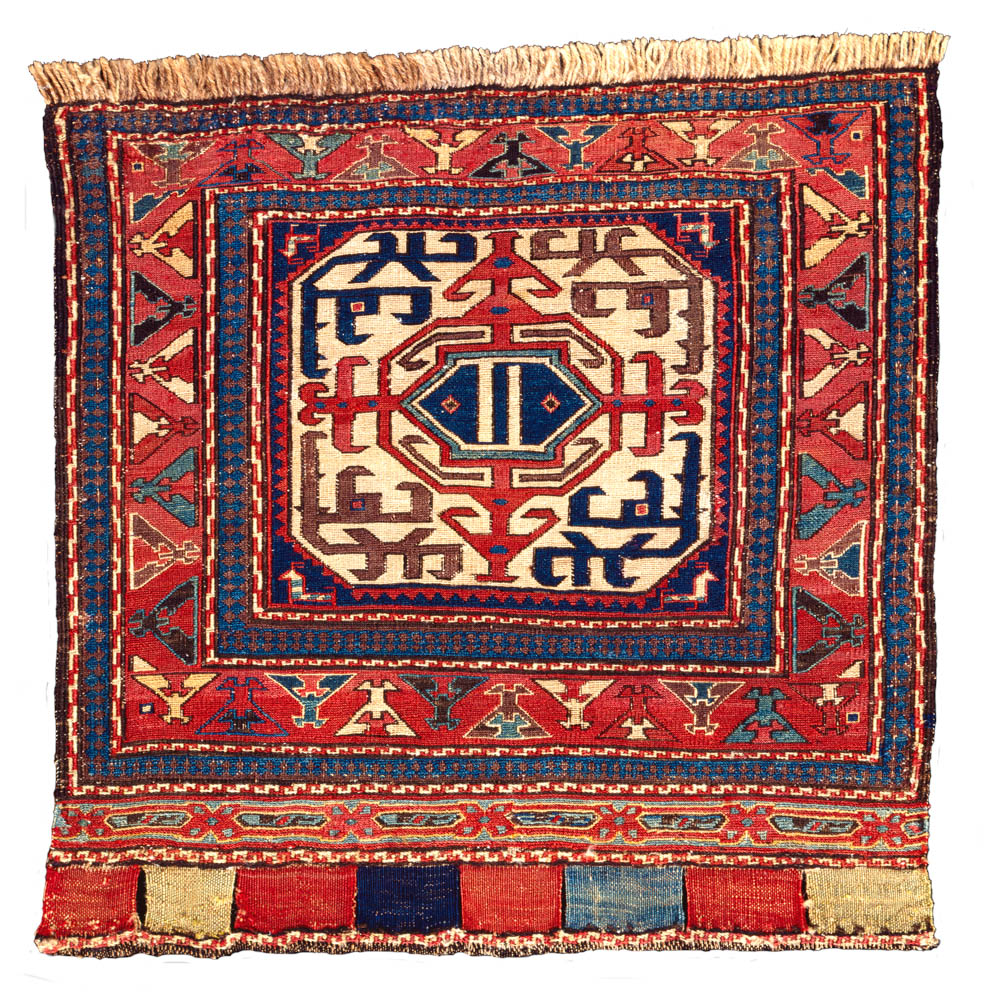Oriental Rugs from the Gerard Paquin Collection, MFA, Boston
This small loan exhibition in the rotunda at the Museum of Fine Arts in Boston, which runs until November 2014, focuses on rugs and bags made in nomadic and village environments from West Anatolia to Persia and Central Asia, all belonging to the well-known Massachusetts collector Gerard Paquin.

West Persian Herati design knotted-pile mafrash panel, 19th century. Paquin collection
Ann Nicholas writes: Reflecting Gerard Paquin’s predilection for brilliant colour, fine wool, and artful design, the rugs complement the MFA’s neoclassical rotunda where they are displayed. Individually they can be viewed as superb examples of woven art, but the installation also allows the viewer to compare the pieces and consider how differences of culture and tradition influenced their weavers. Lauren Whitley, curator in the Department of Textiles and Fashion Arts at the Museum of Fine Arts in Boston, first suggested that Paquin choose six rugs that represented his collection. ‘Picking six wasn’t easy,’ he recalled. ‘I collect Islamic rugs and textiles of a fairly broad range, both in time and geography. We were limited by size – some were too large or small for the available space – and condition. Some older rugs were fragmentary or damaged. Finally we agreed on ten pieces of appropriate sizes.’ These included half a dozen bags, some knotted pile, others flatwoven.


Tekke Turkmen main carpet fragment, western Turkestan, 18th or 19th century. Wool, 1.58 x 2.06m (5’2″ x 6’9″). Paquin collection. See Dodds, Eiland, et al., Oriental Rugs from Atlantic Collections, 1996, pl.184
The five knotted-pile rugs on show exhibit a breadth of design possibilities. The colourful iconography of a large Khamseh rug, for example, contrasts with the simple, stately pattern and colour scheme of a Tekke Turkmen main carpet. The Khamseh reflects the weaver’s immediate environment: there are seemingly spontaneous images of people and birds, and the Iranian political symbol of lion and sun. On the other hand, the Tekke’s repeating göls are a traditional form passed from one generation to the next. Three pile-woven bags provide more such contrast: an Ersari Turkmen torba displays a design adapted from prestigious Uzbek silk ikat; a Persian tribal mafrash panel has a lively, colourful rendition of the ‘Herati’ border, itself adapted from classical rug design; and a Shahsavan bag borrows its repeating diamond pattern from Shahsavan flatweaves.

Karabagh sumakh salt-bag face, southwest Caucasus, late 19th century. Wool and cotton, 0.38 x 0.53m (1’3″ x 1’9″). Paquin collection. See Wertime, Sumak Bags of Northwest Persia and Transcaucasia, 1998, pl. 117
The three flat-woven bags in the exhibition all have rectilinear designs. The colourful field motifs on a Karabagh salt bag are highlighted by its white cotton background. A Shahsavan bag face features an octagon within a square and stylised dragon in the corners. An elegantly spare Karabagh bag has a diagonally striped field that seems to float within a framing border (HALI 99, cover). These imaginative bags demonstrate that any limitations imposed by the techniques of flat weaving do not deter a fine weaver.

Shahsavan sumakh saddle-bag face, Moghan-Savalan region, early 19th century. Wool, 0.51 x 0.49m (1’8″ x 1″7″). Paquin collection. See Wertime, Sumak Bags of Northwest Persia and Transcaucasia, 1998, pl.84

Karabagh sumakh saddle-bag half, southwest Caucasus, third quarter 19th century. o.53 x 0.60m (1’9″ x 1’11”). Paquin collection. See HALI 99, 1998, front cover.
The two Anatolian prayer rugs suggest they were intended for different clientele. A finely knotted Melas rug, typical in design and probably made to appeal to an external market, has a dynamic curvilinear drawing and a wide range of sophisticated colours. In contrast, a robust Sivas rug boasts exuberant colours and design reflecting its intended village use. In April 2014 the MFA hosted a New England Rug Society meeting at which Gerard Paquin walked through the exhibition discussing the pieces on view. He reflected on the aesthetics of each one – its colours, dyes and wool quality. And he pondered each design – its influences, weaving constraints and choice of symbols. He didn’t discuss structure, size or age; rather he shared with NERS members his sense of wonder about the weaver’s skill and how her work reflects art, culture, history and religion.
The next scheduled display of oriental rugs in the MFA rotunda, in autumn 2014, will consist of Northwest Persian and Transcaucasian flatweaves belonging to Connecticut-based NERS member Raoul (Mike) Tschebull.



























Comments [0] Sign in to comment